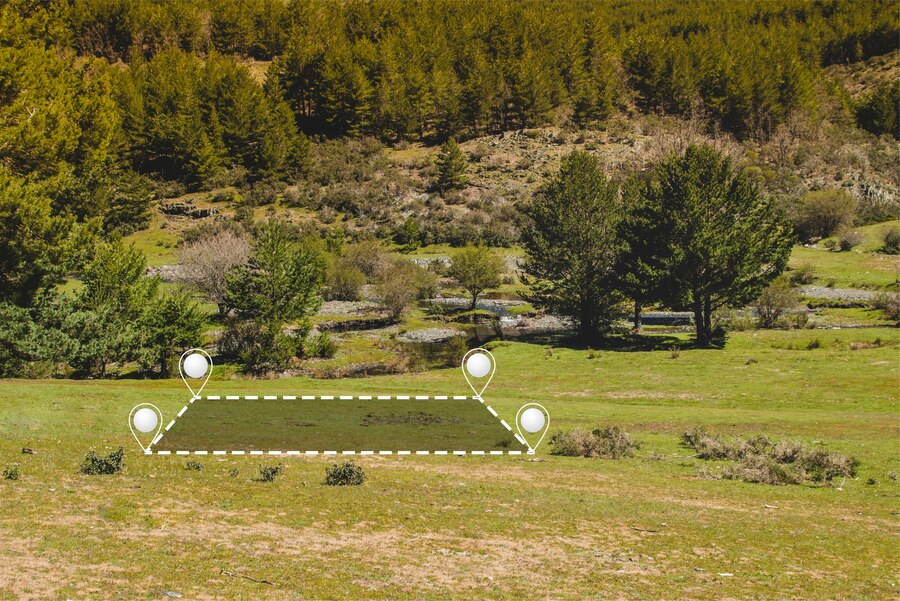How Can Customary Land Tenure Systems Coexist with Statutory Land Ownership?
Introduction
Land remains one of the most powerful and contested resources in Nigeria. It is deeply tied to economic prosperity, cultural identity, political power, and social stability. However, the dualism in Nigeria’s land governance—where customary land tenure systems coexist with statutory land ownership laws—has created both opportunities and conflicts. Understanding how these systems can coexist is essential for sustainable development, land security, investment, and peaceful land administration.
This article provides a deep analysis of both systems, explores the areas of convergence and divergence, and presents strategic recommendations for integration, mutual respect, and practical coexistence of customary and statutory land tenure in Nigeria.
1. The Foundations of Land Ownership in Nigeria
a. Statutory Land Ownership
Statutory land ownership refers to land held or regulated under formal legal instruments and laws, primarily the Land Use Act of 1978. This Act vests all land in the Governor of each State (or Local Government in rural areas), who holds it in trust for the people and grants rights of occupancy—either statutory or customary.
b. Customary Land Tenure
Customary tenure refers to indigenous, traditional, and community-based systems of landholding. Under this system, land is often owned collectively by families, clans, or communities, and managed by traditional rulers or elders based on unwritten customs, values, and inheritance patterns.
2. Historical Context and Legal Development
a. Pre-Colonial Nigeria
Before colonization, all lands were governed under customary rules. Allocation, inheritance, and disputes were handled by local chiefs, family heads, or elders. Customary land was considered sacred and inalienable in many cultures.
b. Colonial Impact
Colonial authorities began interfering with local landholding systems through ordinances like the Public Lands Ordinance of 1903 and the Native Lands Acquisition Ordinance, introducing formal documentation and state control over “vacant” lands.
c. The Land Use Act of 1978
This Act attempted to harmonize land tenure by nationalizing land ownership and centralizing control under state governments. It abolished freehold titles and introduced statutory rights of occupancy, which has since complicated customary systems.
3. Key Features of Customary Land Tenure
Communal Ownership: Land is not privately owned but shared among community members.
Inheritance-Based Access: Access is often through patrilineal or matrilineal lineage.
Traditional Allocation: Chiefs and elders allocate land for farming, housing, or social use.
Oral Agreements: Transactions are typically unwritten but socially binding.
Cultural Significance: Land is tied to ancestry, identity, and spirituality.
4. Key Features of Statutory Land Ownership
Legal Documentation: Ownership is proven through titles like Certificates of Occupancy.
Formal Administration: Governed by land registries and ministries.
State Control: Governors and Local Governments grant land usage rights.
Fixed Lease Terms: Occupancy is typically up to 99 years (renewable).
Survey and Registration: Boundaries must be surveyed and registered to ensure legality.
5. Areas of Conflict Between the Two Systems
a. Double Allocation
Cases where the same parcel of land is allocated by a community under customary tenure and also granted a statutory title by government authorities.
b. Land Speculation and Encroachment
Customary owners may sell land informally to multiple buyers. Without formal title, buyers face legal uncertainty and litigation.
c. Disregard for Customary Rights
Government acquisitions under the Land Use Act often ignore or inadequately compensate customary landowners.
d. Disputes over Inheritance and Family Rights
Statutory law often conflicts with customary inheritance systems, particularly regarding women’s rights and child legitimacy.
6. Constitutional and Legal Recognition of Customary Tenure
Despite the Land Use Act, customary land rights are still recognized:
Section 1 of the Act allows for Customary Right of Occupancy (CRO) in rural areas.
Nigerian courts have repeatedly affirmed customary rights as legally valid in land matters.
The Constitution acknowledges traditional institutions and customary laws where not repugnant to natural justice.
7. Case Law Supporting Coexistence
Amodu Tijani v. Secretary, Southern Nigeria (1921)
A landmark case where the Privy Council recognized that land ownership under Nigerian custom should be respected and not extinguished without compensation.
Adisa v. Olayiwola (2000)
Reinforced that family members with customary ownership have protectable interests in land, even if the land is sold under statutory processes.
8. Opportunities for Coexistence
a. Customary Right of Occupancy (CRO)
The Land Use Act enables individuals and families to apply for formal recognition of their customary rights through a CRO.
b. Conversion of Customary Title to Statutory Title
Customary landholders can apply for a Certificate of Occupancy to obtain statutory protection and access to bank financing.
c. Recognition of Traditional Authorities in Land Governance
Traditional rulers can be included in land allocation, planning, and registration processes.
9. Bridging the Gap Between Systems
a. Legal Harmonization
Review and amendment of the Land Use Act to better accommodate customary land interests.
Enactment of state-level land laws that codify customary practices.
b. Documentation and Record-Keeping
Encourage communities to document landholdings and transactions.
Use community land registers and digital mapping systems.
c. Community-Based Land Administration
Empower local land committees to manage allocation and dispute resolution under state supervision.
d. Public Education and Legal Literacy
Teach rural communities about their rights and the benefits of land registration.
10. Role of Technology and Digitization
Modern technology can help bridge gaps:
Geospatial mapping of community lands
Digital land registries to reduce double allocation
Mobile platforms for community consultation and reporting encroachments
Blockchain-based land records for transparent transactions
11. Role of Traditional Institutions
Traditional rulers remain the custodians of customary lands. For coexistence to work, they must:
Be trained in modern land governance
Collaborate with government land agencies
Help prevent fraudulent allocations
Act as mediators in community land disputes
12. Role of Real Estate Lawyers and Planners
Legal professionals can facilitate coexistence by:
Conducting proper due diligence
Helping clients convert customary rights to statutory titles
Educating communities on land titling
Resolving disputes through ADR mechanisms like mediation and arbitration
13. Customary Tenure and Gender Equality
One challenge is that customary systems often discriminate against women. However, a hybrid approach can help:
Use statutory protections to support equal inheritance rights
Encourage community reforms to include women in land decision-making
Advocate for inclusion of women in land registration processes
14. Customary Tenure and Sustainable Development
When properly recognized, customary systems can:
Promote local stewardship of land
Encourage long-term planning
Reduce land grabbing and conflict
Support community-based environmental management
15. Lessons from Other Countries
Ghana:
Recognizes Customary Land Secretariats to manage community land alongside state structures.
Kenya:
Passed the Community Land Act (2016) to integrate and protect customary land.
South Africa:
Applies dual recognition of customary and freehold systems in land reform programs.
16. Proposed Framework for Harmonization in Nigeria
Constitutional recognition of customary land beyond rural areas.
Customary Land Commissions in every state to document communal lands.
Digital registry linking CROs to government databases.
Legal aid support for poor communities to obtain formal title.
Government partnerships with traditional rulers on land use planning.
Conclusion
Customary and statutory land systems in Nigeria are not inherently incompatible. They reflect different worldviews—one rooted in tradition and communal heritage, the other in formal law and economic modernization.
For Nigeria to thrive, both systems must not only coexist but collaborate. This means recognizing the legitimacy of customary tenure, integrating traditional leaders into modern land governance, and giving communities tools to formalize their ownership.
With the right policies, legal reforms, and stakeholder engagement, Nigeria can create a land tenure system that is inclusive, secure, and sustainable for all.
Secure Your Customary Land Rights—Bridge the Gap with Legal Protection
In today’s Nigeria, owning land through customary means is no longer enough. Whether it’s family inheritance, community allocation, or ancestral land, you must legally secure your title to avoid disputes, encroachment, and government acquisition.
At Chaman Law Firm, we understand both worlds—customary and statutory—and we help landowners:
✅ Convert customary land to statutory titles (C of O & CRO)
✅ Avoid double allocations and legal conflicts
✅ Draft community-compliant, court-enforceable land documents
✅ Resolve family, inheritance, and boundary disputes peacefully
✅ Legally protect communal land and empower local leadership
📞Phone: 08065553671, 08096888818
✉ Email: chamanlawfirm@gmail.com
📍 Address: 115, Obafemi Awolowo Way, Allen Junction, Ikeja, Lagos, Nigeria
🌍Click here to learn more about Chaman Law Firm
Chaman Law Firm – Your Right, We Protect.
Let’s help you secure your land, your legacy, and your future.


